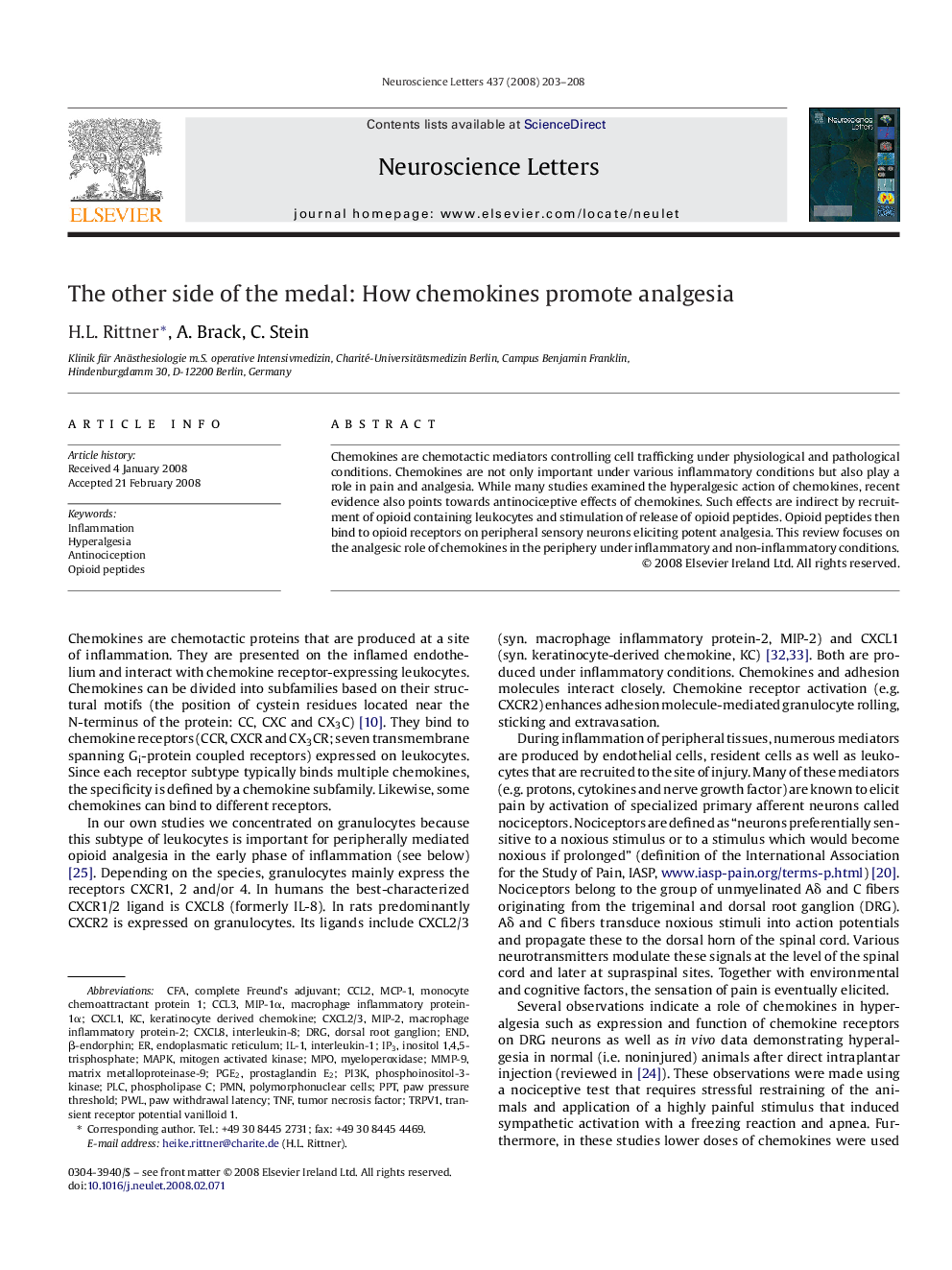| Article ID | Journal | Published Year | Pages | File Type |
|---|---|---|---|---|
| 4348616 | Neuroscience Letters | 2008 | 6 Pages |
Abstract
Chemokines are chemotactic mediators controlling cell trafficking under physiological and pathological conditions. Chemokines are not only important under various inflammatory conditions but also play a role in pain and analgesia. While many studies examined the hyperalgesic action of chemokines, recent evidence also points towards antinociceptive effects of chemokines. Such effects are indirect by recruitment of opioid containing leukocytes and stimulation of release of opioid peptides. Opioid peptides then bind to opioid receptors on peripheral sensory neurons eliciting potent analgesia. This review focuses on the analgesic role of chemokines in the periphery under inflammatory and non-inflammatory conditions.
Keywords
PPTIP3PLCPWLPGE2MMP-9PMNCXCL8DRGIL-1TRPV1TNFPI3KCFAdorsal root ganglioncomplete Freund's adjuvantMPOinositol 1,4,5-trisphosphateMAPKβ-endorphinpaw pressure thresholdinflammationInterleukin-8interleukin-1paw withdrawal latencyendoplasmatic reticulumPolymorphonuclear cellsAntinociceptiontumor necrosis factorphospholipase Cphosphoinositol-3-kinaseMatrix metalloproteinase-9macrophage inflammatory protein-2mitogen activated kinasemyeloperoxidaseendTransient receptor potential vanilloid 1Hyperalgesiamonocyte chemoattractant protein 1Macrophage inflammatory protein-1αProstaglandin E2Opioid peptides
Related Topics
Life Sciences
Neuroscience
Neuroscience (General)
Authors
H.L. Rittner, A. Brack, C. Stein,
